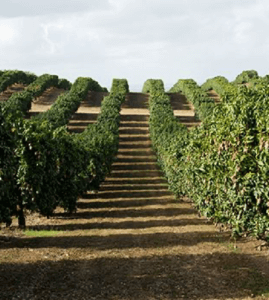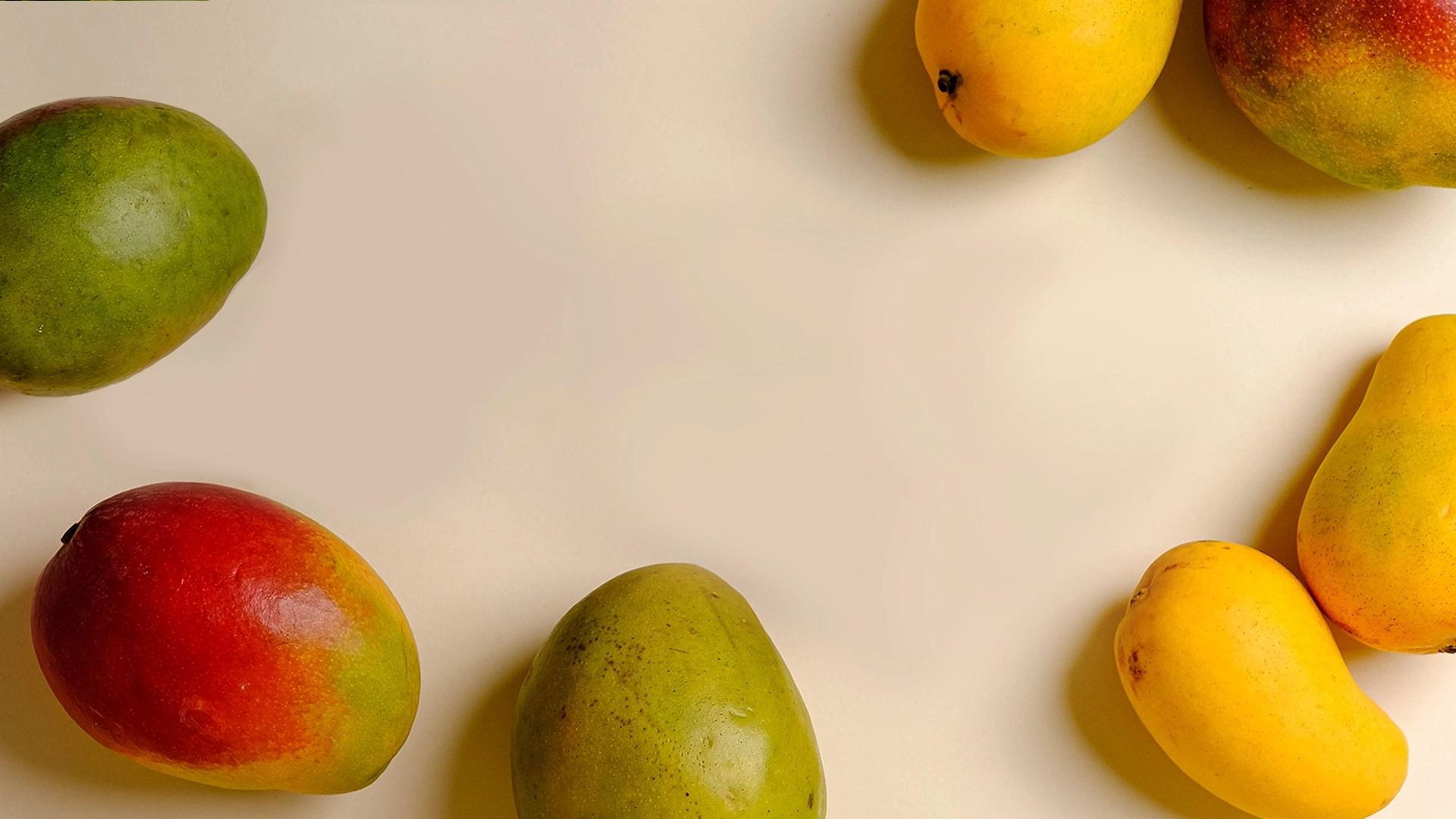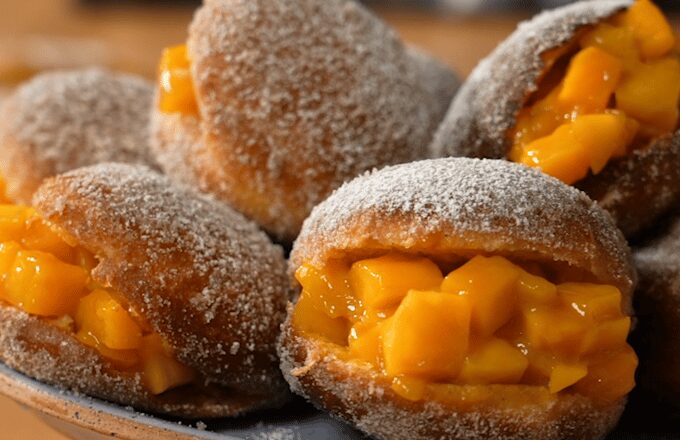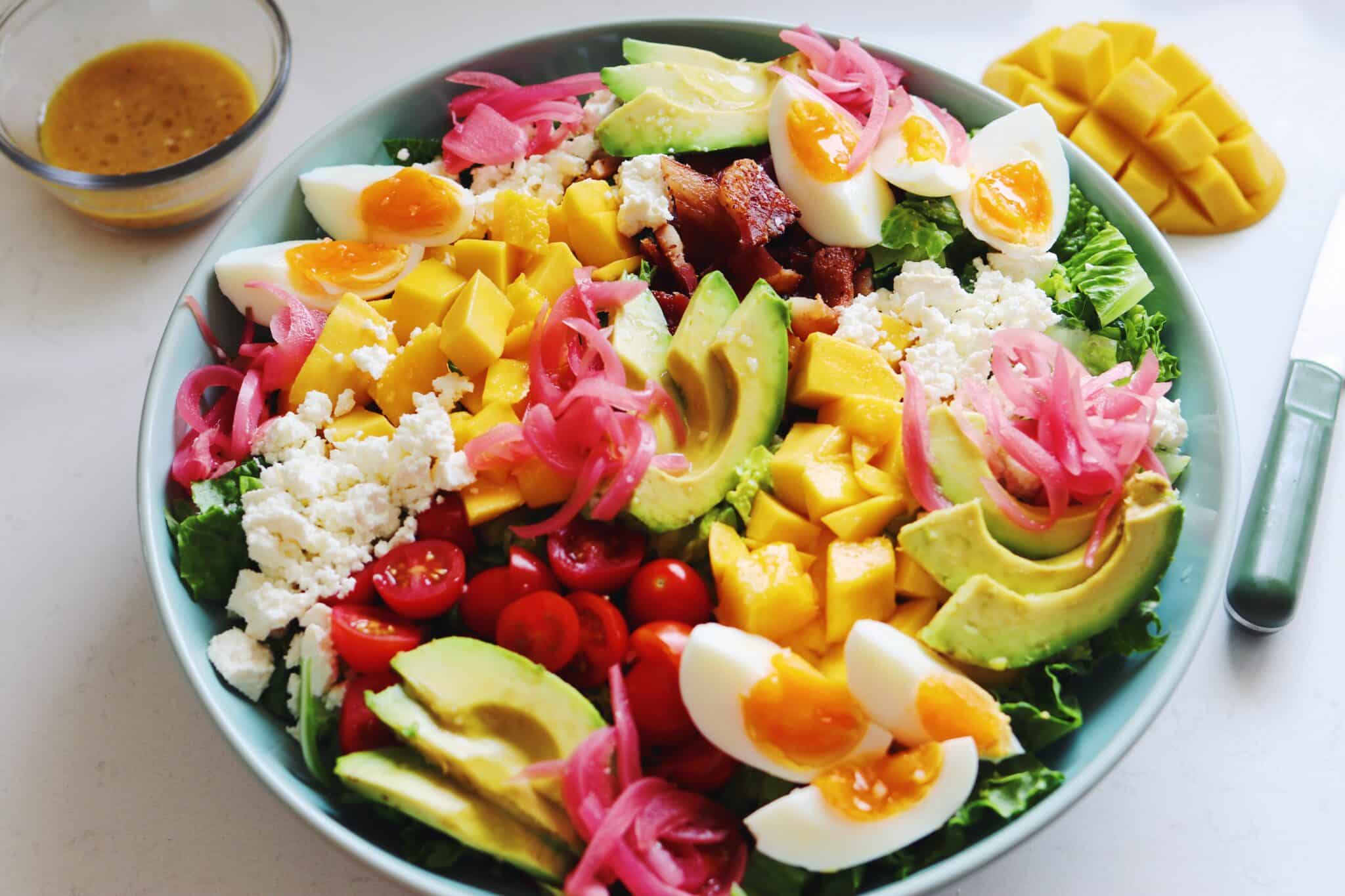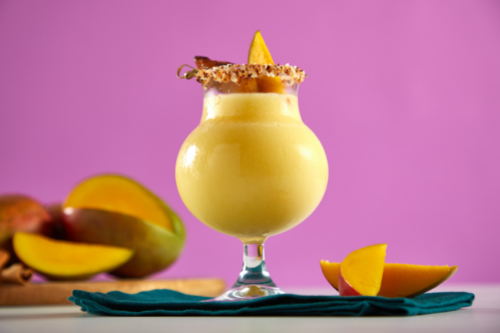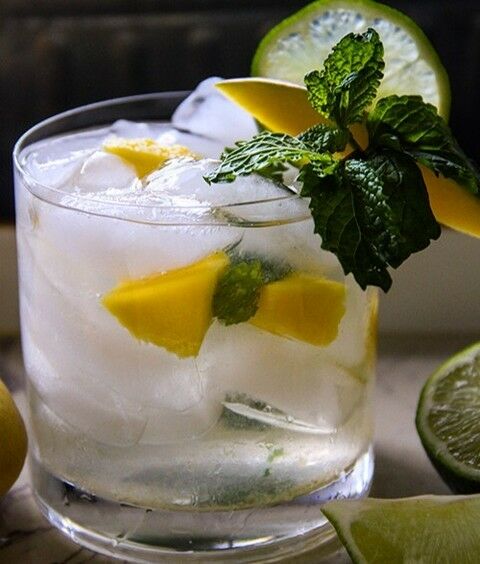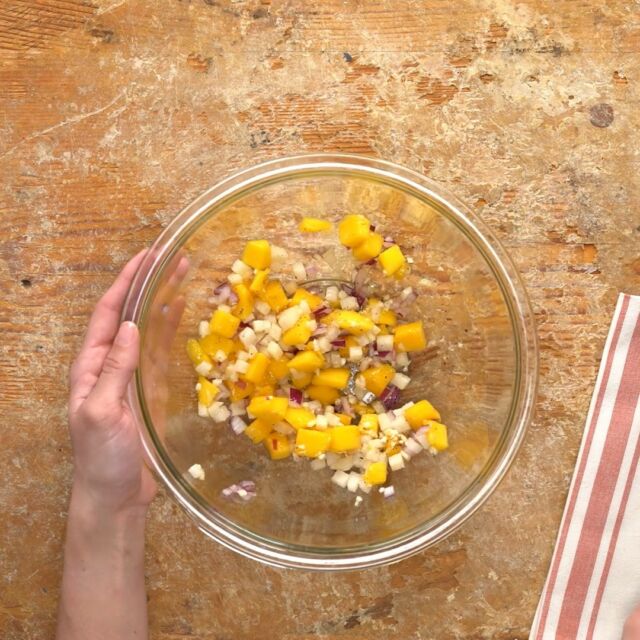
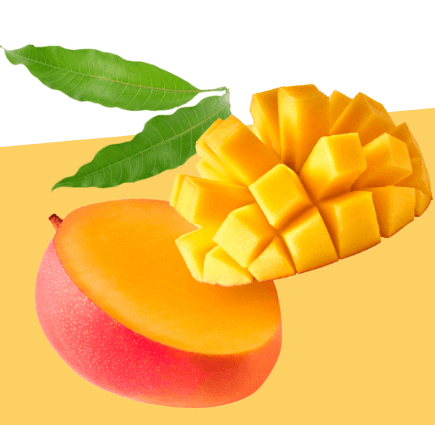
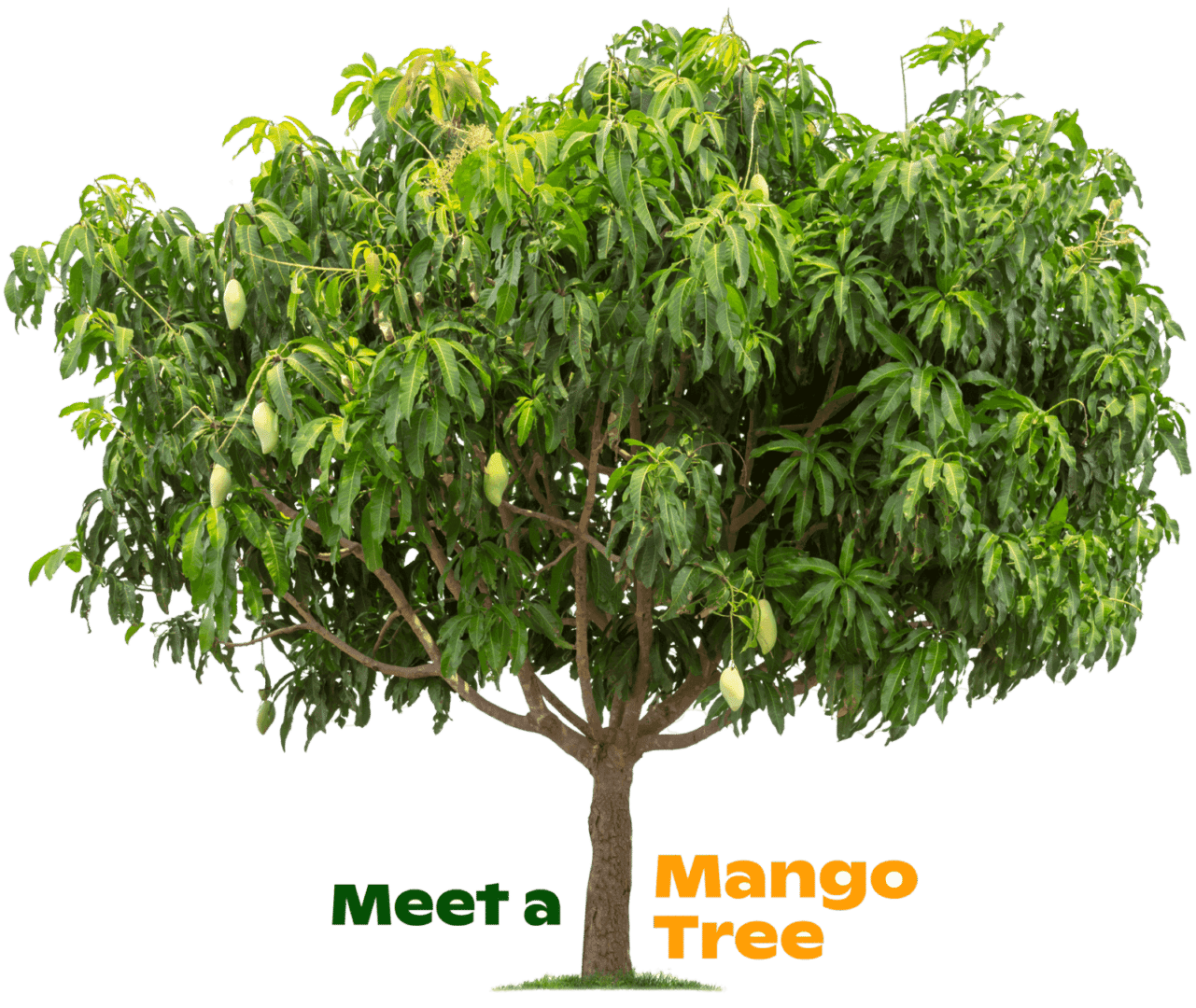

The amazing mango tree (Mangifera Indica) is much more than just a source for mangos—It’s a beautiful, living form that gives back to the planet and to the people who tend it.
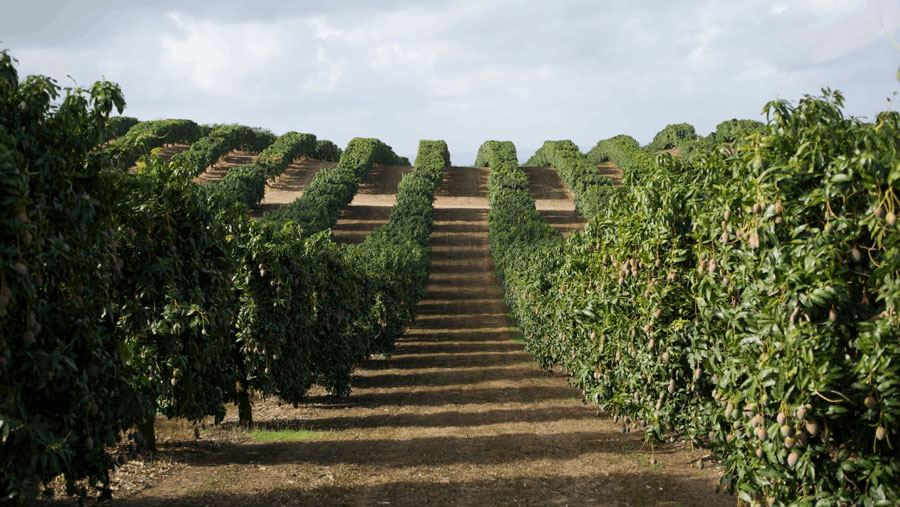
That juicy mango on your plate was, at one point, a tiny aromatic blossom on a mango tree—a tree that took about six years to start bearing mangos. Some trees can live and bear fruit for up to 300 years.
It takes around 120 days to transform from tiny flower to ready-to-eat superfruit!
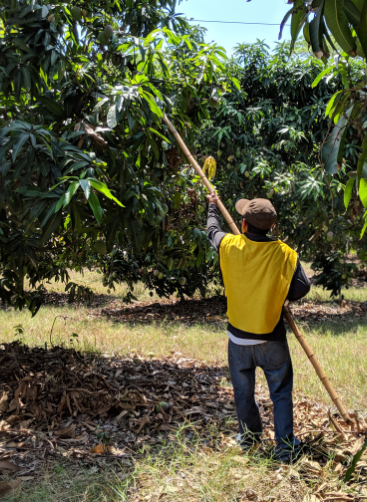
There are more than 1,200 cultivated varieties of mangos grown around the world. Trees range in sizes. Smaller ones grow up to 8 feet while the largest mango trees can reach heights of 60-100 feet with a canopy that can stretch out to nearly 35 feet. The most popular and widely grown mango tree (Tommy Atkins) reaches a height of around 12 feet. A mango tree’s leaves are long and leathery. They are a deep shade of green and around five to sixteen inches in length, alternating on a slim woody branch. Mango trees thrive in full sun, high temperatures, and compost-rich soil that is well drained and quick to dry.
When ready to harvest, mature mangos are usually hand-picked, then quickly transported to local packinghouses. The utmost care is given to these delicious and fresh fruits. While in the packinghouse, inspectors test, wash, size, and then load the fruit into specialized cartons that provide proper airflow and protection for their upcoming journey.
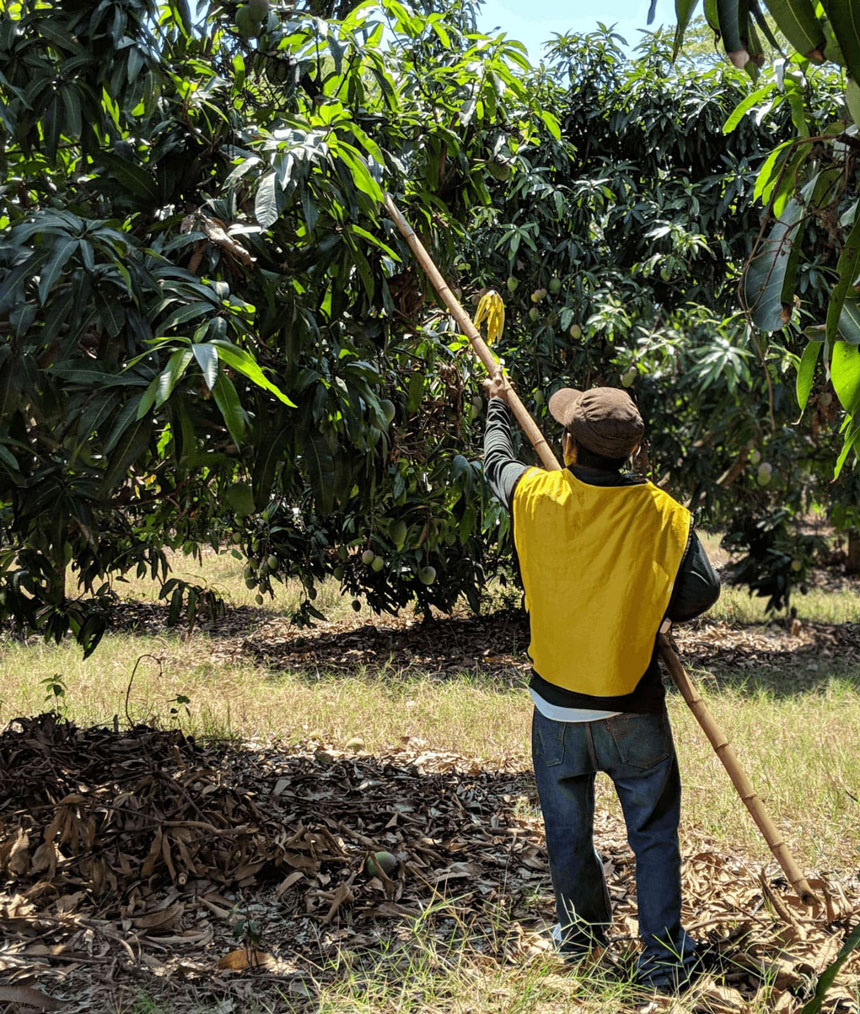

Choosing the perfect mango all comes down to touch, not color. Give your mango a gentle squeeze to determine its ripeness. If it gives slightly, you’ve found your mango match! Slicing is just as simple and takes just three steps: Slice sides, cut in a grid pattern, then scoop. You’ve unlocked joy!


